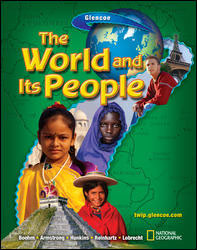The World and Its PeopleChapter 25:
Southeast AsiaWeb Activity Lesson PlansIntroduction
In this chapter, students learned about the history, geography, and cultures of Southeast Asia. They discovered that the Philippines is unique from the rest of Southeast Asia in several ways — it was a Spanish colony for more than 300 years and is the only Christian nation in Southeast Asia. In this activity, students will take a closer look at the people, economy, and culture of the island nation of the Philippines.
Lesson Description
Students will visit the Asian Info Web site to explore information about the Philippines. They will examine links about the people, economy, and customs of the Philippines, and will then choose 10 facts to include on a fact sheet about the Philippines. Instructional Objectives - Students will be able to list the main export crops and trading partners of the Philippines.
- Students will be able to describe several customs of the people in the Philippines.
Student Web Activity Answers - the peso; the Philippines was a Spanish colony for more than 300 years
- The main commercial crops include bananas, pineapples, copra, papayas, oranges, sugarcane, and mangos. The country's main trading partners are the United States, Singapore, Hong Kong, Japan, and Taiwan.
- Originally, the term Filipino referred to a person of Spanish descent who was born in the Philippines. The meaning of the term changed after the eighteenth century to apply to the Christianized Malays who make up the majority of the Philippine population.
- Students' answers may include family loyalty, treating elders with respect and deference, removing one's shoes when entering someone's home, using hand and facial gestures to communicate, speaking gently and politely, and gender equality in business and society.
- Students' fact sheets may vary but must include accurate information.
 | 




